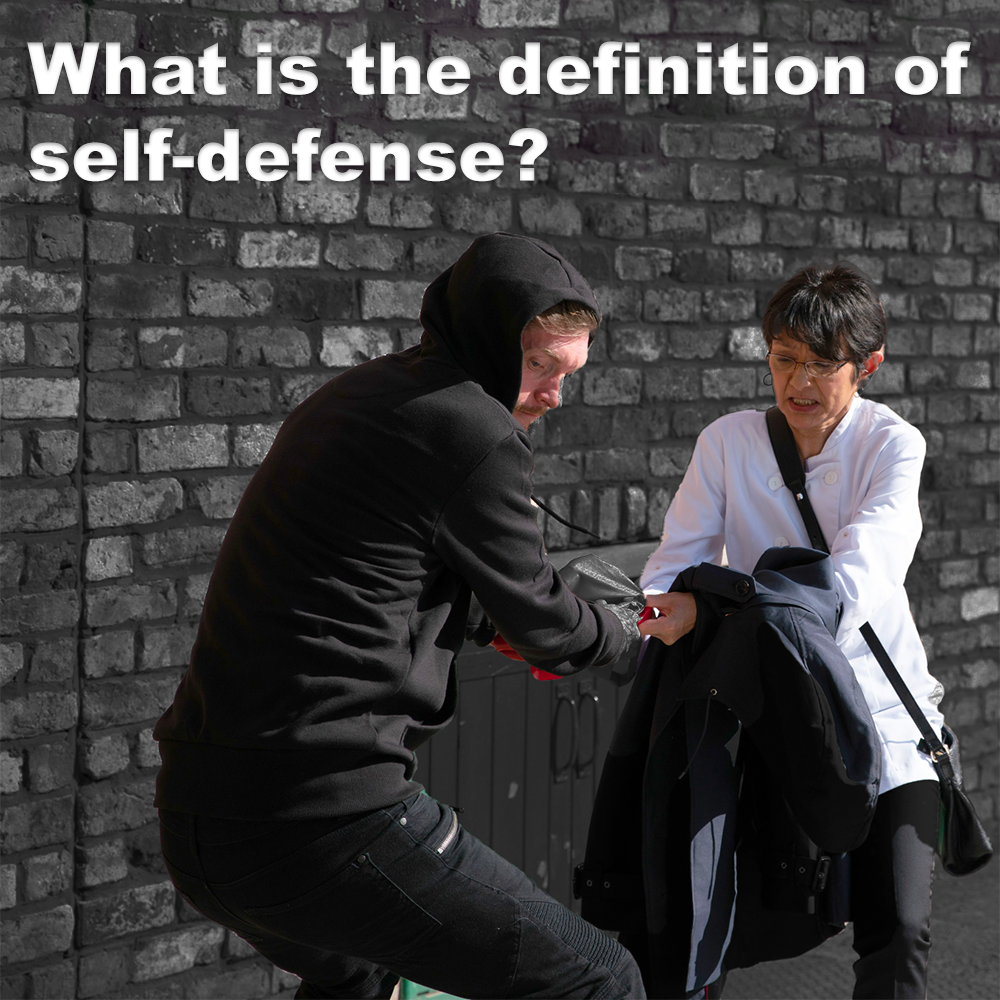
What is the definition of self-defense?
.
The average person’s idea of what constitutes “self-defense training” is generally the furthest thing from the truth.
.
The question “what is real self-defense?”, prompts many to play their ego card. Some people become offended at the suggestion of anything outside their martial arts world that is not actually effective. This attitude in itself puts others in harm’s way, and keeps the majority of the general public in the dark when it comes to what their chosen martial art is supposed to teach them.
.
Real self-defense is the ability to AVOID conflict and/or adequately defend yourself in a confrontation. You must be able to do this under extreme stress and fear. In a real-life situation, there are no rules, no referees, no controlled environments, and, most likely, no help. Your attacker will always pick the time, the place, and method of attack; you will never have this luxury.
.
What does it take for a real-life attack to happen?
.
As little as a look, a word – sometimes even less. Usually, your attacker won’t know you. You will be nothing to them. If he wants something from you he will do anything to get it. When a potential attacker seeks his prey, he looks for basically one thing: OPPORTUNITY.
.
That’s why the first part of the definition of self-defense – the ability to avoid conflict – is so important.
.
What if, for some reason, you can’t avoid a dangerous situation?
.
That’s when the second part of the definition – or to adequately defend yourself in a conflict – comes into play.
.
But to to access your skill, knowledge, decision making ability, and awareness, you have to tap into your mental ability. Because without this, the physical side of your ability – despite your training – will be mediocre at best.
.
Martial arts training leaves most people in better physical shape (some not so), but still unable to adequately defend themselves. Why? They haven’t been introduced to, or received education in the REALITY of self-defense.
.
Real-life conflicts are nothing like what you see in sport. It’s not even close.
.
The tragedy is, without the right kind of training, this is the only frame of reference most people will ever have.
..
And there is so much phony self-defense out there: You witness demonstrations in which a defender successfully intercepts an attack, a punch, a kick, or a knife stab, and then “destroys” an attacker with ease.
.
Without exception the attack is prearranged, the initial defense is FAKE – it wouldn’t work against anyone other than a cooperating partner – and the follow-up, should it be possible, is so unrealistic that it exposes the defender to further threatening attacks.
.
The bottom line is that the best self-defense is not having to fight, and this is something that those of you that fight first (you know who you are), must understand.
.
However, being a proficient, intuitive fighter will help in self-defense. Good fighters are calm, relaxed, hard to upset, and thus hard to provoke and draw into a fight. And this is a really important distinction. Those dojo that simply teach ‘how to fight’ could be drawn into a fight without thought. This is wrong.
.
For your actions to qualify as justifiable self-defense, you must be in immediate danger. Lawyers call it “imminent jeopardy.” Jeopardy can cease as soon as your attacker surrenders or ceases to be a threat. Continuing to use force against the attacker when you are no longer in imminent jeopardy is illegal, and you will be prosecuted.
.
Real violence is fast, dynamic, chaotic, and ugly. It’s not something you want to face, for a variety of physical, ethical, and legal reasons. Most martial arts will not prepare you for it.
.
Self-defense and martial arts are related and often interlinked, but they are NOT the same. There are no secret or ultimate techniques. And real skill in physical self-defense requires not only techniques, but also working with principles, functional training methods and strategies.
.
Self-defense is not what most people think it is. There’s only one goal in self-defense, and that is to prevent injury to yourself (or others), to survive. Most of the time, the vast majority of the time, physical techniques are not the best way to do that.
.
The best way to avoid injury is to prevent an attack from occurring in the first place, to prevent a physical conflict.
.
What does your martial art teach you?
.
.
